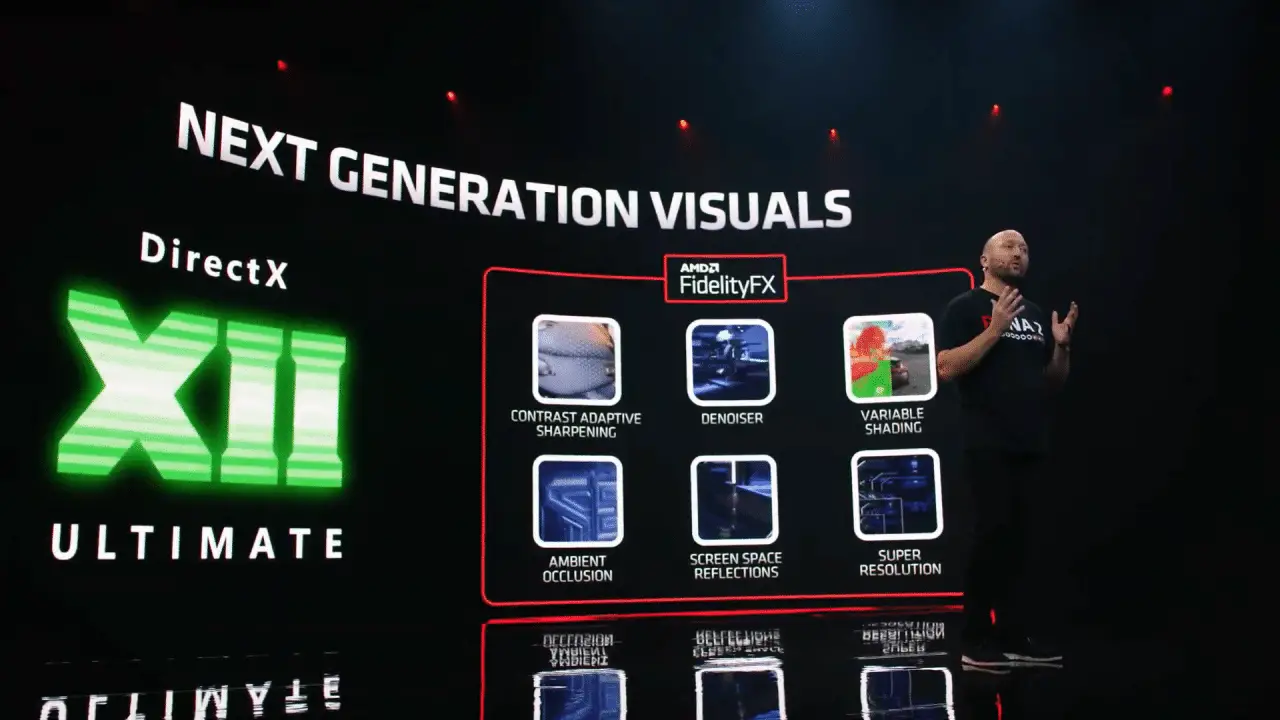AMD’s image enhancement technology Fidelity FX Super Resolution (FSR) was unveiled earlier this year and is still under development, with hopes from AMD of a launch in the latter half of 2021. The technology will challenge competitor Nvidia’s upscaling technology DLSS, which has received more widespread support in today’s game.
DLSS increases performance by rendering fewer pixels and then scaling up images using machine learning and Nvidia’s Tensor cores. AMD’s graphics cards lack dedicated Tensor cores, which has raised the question of which technology should drive FSR, where AMD has not confirmed more than that they have evaluated several different approaches. Now a patent has appeared in the US equivalent of the Patent and Registration Office, United States Patent and Trademark Office.
The patent applies to “Gaming Super Resolution” and was filed as early as 2019, but has not been available to the public until now. In all probability, it relates to technology that will at least partly be implemented in the coming FSR.
A super resolution processing method is provided which improves processing performance. The method includes receiving an input image having a first resolution, generating linear down-sampled versions of the input image by down-sampling the input image via a linear upscaling network and generating non-linear down-sampled versions of the input image by down-sampling the input image via a non-linear upscaling network. The method also includes converting the down-sampled versions of the input image into pixels of an output image having a second resolution higher than the first resolution and providing the output image for display.
The patents provide a solution that combines both linear and non-linear upscaling techniques. In a further explanation, AMD believes that the linear method that most upscaling techniques currently use can give a blurred or incorrect end result, because non-linear data is not included. By combining linear with non-linear methods, they should be able to preserve and improve the image quality while increasing performance.
Like patents in general, this patent does not provide an exact insight into AMD’s implementation. As the company has been open about the fact that FSR is still being evaluated, this patent from 2019 can definitely prove to have less impact on the upcoming function than expected.
AMD has previously stated that image enhancement does not need machine learning to work, but that it can be done in several different ways. In conversations with SweClockers, AMD has confirmed that there is no artificial intelligence involved in FSR.
In various alternatives, the processor 102 includes one or more processors, such as a central processing unit (CPU), a graphics processing unit (GPU), or another type of compute accelerator, a CPU and GPU located on the same die, or one or more processor cores, wherein each processor core can be a CPU or a GPU or another type of accelerator. Multiple processors are, for example, included on a single board or multiple boards. The device 100 can include, for example, a computer, a gaming device, a handheld device, a set-top box, a television, a mobile phone, or a tablet computer.
The patent also reveals that the technology is intended to be able to utilize the power of both processors and graphics processors, individually or in combination. FSR must also be able to be used for several different types of devices, including computers, handheld devices, game consoles and TVs.















